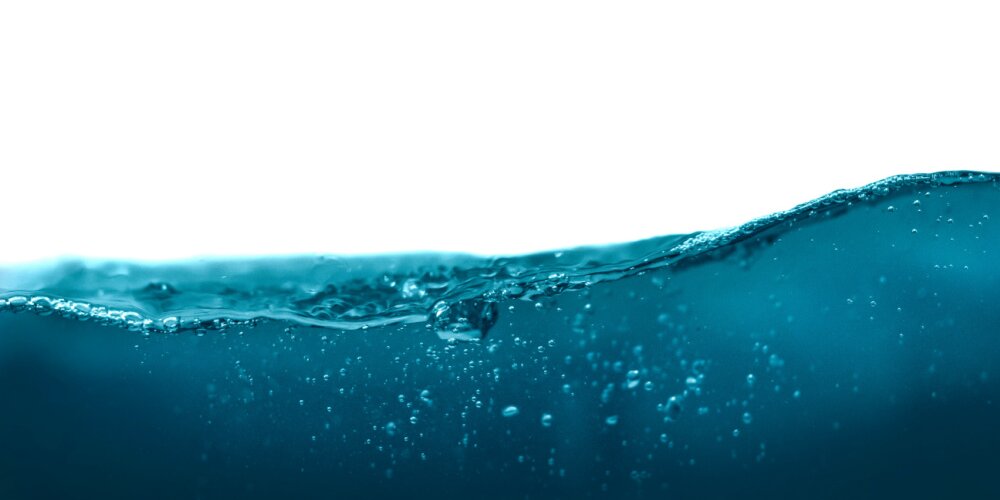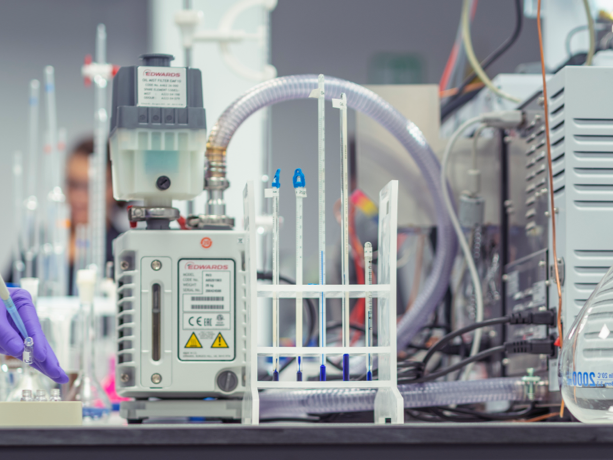Scientists Discover 'Superhydrophobic' Surfaces

A team of researchers involving scientists from the Harvard John A. Paulson School of Engineering and Applied Sciences (SEAS), the Wyss Institute for Biologically Inspired Engineering at Harvard, the Friedrich-Alexander-Universität Erlangen-Nürnberg in Germany, and Aalto University in Finland, have developed a superhydrophobic surface with a ‘stable plastron’ that can last for months underwater.
The development of this superhydrophobic surface has the potential to be used in a variety of contexts, especially in the maritime industry where it could be used to prevent the adhesion of bacterial and marine organisms such as barnacles and mussels.
But, what’s the story behind this novel surface? And what exactly is a ‘plastron’?
The story begins in a rather unexpected place…
The Argyroneta aquatica
Did you know that there’s a species of spider that lives its entire life underwater despite having lungs that can only breathe atmospheric oxygen?
The Argyroneta aquatica has developed the ability - using millions of rough, water-repellent hairs - to trap a layer of air around its body. This completely separates the spider’s lungs from the surrounding water and provides it with an oxygen supply.
And, the name of this layer of air? A plastron.
For a long time, scientists realised that if they could harness plastrons and create equivalent superhydrophobic surfaces, they could prevent corrosion, bacterial growth, the adhesion of marine organisms, chemical fouling, and other deleterious effects of liquid on surfaces.
Yet, until now, it had proven extremely difficult to maintain a plastron on a surface underwater. Plastrons proved to be very unstable, and would - at most - keep surfaces dry for only a few hours under lab conditions.
What scientists needed was a way to harness the power of plastrons, in a consistent, reliable way that would facilitate industrial applications.
The breakthrough
The obvious solution was to create a suitable surface that could sustain a plastron for long periods of time.
However, they were faced with a quandary.
As per the Argyroneta aquatica, plastrons require a rough surface on which to form. But, applying this degree of roughness to something like a ship’s hull can make the surface mechanically unstable and susceptible to defects.
Furthermore, traditional forms of measuring the stability of artificially created plastrons only accounted for two parameters, which do not provide sufficient information about the stability of the air plastron underwater.
So, the team of scientists set about creating solutions to these two problems, deciding to tackle the measurement issue first.
The solution to this involved identifying a larger set of parameters, including information on surface roughness, the hydrophobicity of the surface molecules, plastron coverage, contact angles and more. When combined with thermodynamic theory, these parameters allowed the team to accurately calculate whether the plastron would be stable.
In terms of creating the surface itself, the team created a new method and manufacturing technique to create an ‘aerophilic’ surface from a commonly used and inexpensive titanium alloy.
The result was a surface that creates a long-lasting plastron which keeps the surface dry for thousands of hours. In fact, the scientists state that this plastron lasts longer than those found in nature.
To prove the stability of the plastron, the team subjected it to rigorous testing. This included bending it, twisting it, blasting it with hot and cold water, and abrading it with sand and steel. Despite this, the plastron survived 208 days submerged in water.
Commenting on the breakthrough, Joanna Aizenberg, Amy Smith Berylson Professor of Materials Science and Professor of Chemistry & Chemical Biology at SEAS, said:
“Research in bioinspired materials is an extremely exciting area that continues to bring into the realm of human-made materials elegant solutions evolved in nature, which allow us to introduce new materials with properties never seen before.
This research exemplifies how uncovering these principles can lead to developing surfaces that maintain superhydrophobicity underwater”.
Alexander B. Tesler, the lead author of the paper that announced this breakthrough, said:
“We used a characterisation method that had been suggested by theorists 20 years ago to prove that our surface is stable, which means that not only have we made a novel type of extremely repellent, extremely durable superhydrophobic surface, but we can also have a pathway of doing it again with a different material”.
It is now expected that the team will explore practical applications for this new surface, including biomedical, maritime and broader industrial applications.
The research has been published in Nature Materials and can be read here.
Need to understand the characterisation of a material?
Then speak to The Lab today. Our materials science experts are able to undertake a variety of tests and analyses to determine the underlying constitution of a material.
Our materials testing services include sample handling and preparation, failure investigation, material identification and hardness testing, and paint and coatings analysis.
Find out more about The Lab’s materials testing services now
For more insights, news and information, explore The Lab’s News and Knowledge Hub…
Researchers Observe ‘Self-Healing’ Metals | Scientists Uncover New Way to Make Polymers Stronger | Researchers Discover the World’s Toughest Material
- Date
- 22/11/2023
